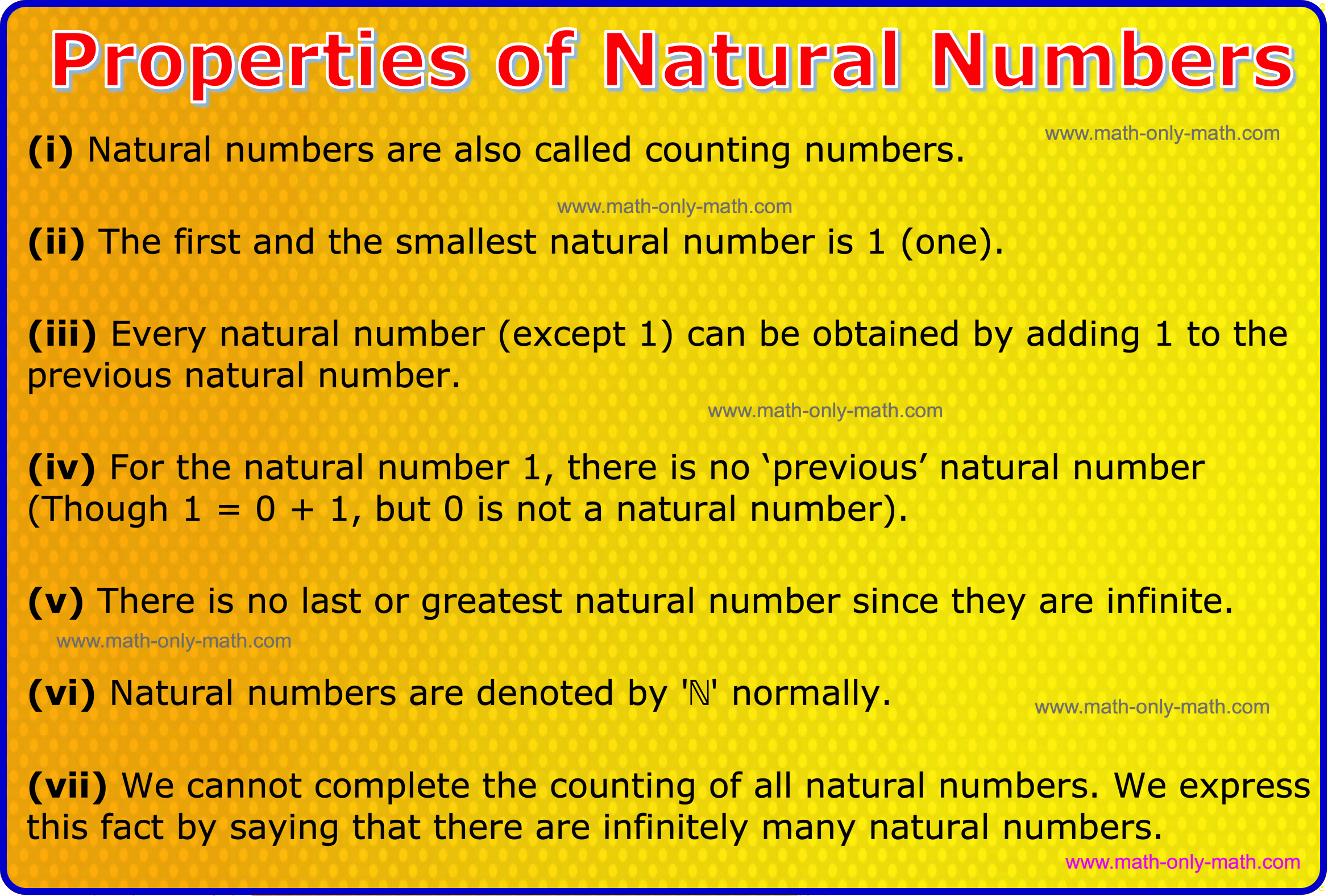Subscribe to our ▶️ YouTube channel 🔴 for the latest videos, updates, and tips.
Properties of Natural Numbers
The numbers that we use for counting, le., 1, 2, 3, 4, 5, 6, 7, 8, 9, ... are called the natural numbers.
The collection of all natural numbers is called the set of natural numbers, which is denote by the letter ℕ. Thus,
ℕ = {1, 2, 3, 4, 5, 6, 7, ...}
The properties of natural numbers are as follow:
(i) Natural numbers are also called counting numbers.
(ii) The first and the smallest natural number is 1 (one).
(iii) Every natural number (except 1) can be obtained by adding 1 to the previous natural number.
(iv) For the natural number 1, there is no ‘previous’ natural number (Though 1 = 0 + 1, but 0 is not a natural number).
(v) There is no last or greatest natural number since they are infinite.
(vi) Natural numbers are denoted by 'ℕ' normally.
(vii) We cannot complete the counting of all natural numbers. We express this fact by saying that there are infinitely many natural numbers.
Note:
The counting numbers 1, 2, 3, 4, ..... are called naturals numbers. The set of natural numbers is denoted by 'ℕ'. Thus, ℕ = {1, 2, 3, 4, .....}.
We also observe the following facts about the natural numbers:
Successor of a Natural Number:
If we take any natural number and add 1 to it, we get the next natural number. number so obtained is called the successor of that number.
For Example:
The successor of the natural number 2046 is 2047.
Predecessor of a Natural Number:
The predecessor of a natural number is the number just before it, i.e., 1 less than the given natural number.
For Example:
The predecessor of the natural number 2046 is 2045.
Note: The natural number 1 does not have its predecessor.
Even Natural Numbers (E):
A system of naturals numbers, which are divisible by 2 or are multiples of 2, is called a set of even numbers. It is denoted by 'E'.
Thus, E = {2, 4, 6, 8, 10, 12, .....}
There are infinite even numbers.
Odd Natural Numbers (O):
A system of naturals numbers, which are not divisible by 2 or are not multiples of 2, is called a set of odd numbers. It is denoted by 'O'.
Thus, O = {1, 3, 5, 7, 9, 11, .....}
There are infinite odd numbers.
Taking together the odd and even numbers, we get Natural Numbers.
From Properties of Natural Numbers to HOME PAGE
Didn't find what you were looking for? Or want to know more information about Math Only Math. Use this Google Search to find what you need.



New! Comments
Have your say about what you just read! Leave me a comment in the box below. Ask a Question or Answer a Question.